[Esp-Eng]El estiramiento corporal fortalece los músculos./Body stretching strengthens muscles.
Practicar ejercicios y posturas de estiramiento permiten el fortalecimiento muscular, además son muy energizantes y mejoran la postura, razones para recomendar desde la primera edad, dichas prácticas consecuentes de estiramiento corporal, a la par de una adecuada alimentación, en ese sentido permítanme presentarles en la presente publicacion, una serie de acciones de calentamiento del cuerpo y las posturas de estiramiento denominadas la pinza estando sentados y parados, con sus variantes, inicialmente se indica; la asana Paschimottanasana o postura la pinza desde la posicion sentados, igualmente la pinza y Uttanasana, desde la ubicación con el cuerpo parado. Las asanas indicadas, con sus respectivas variantes ayudan al estiramiento o elongación del cuerpo y favorecen un efectivo fortalecimiento de los músculos.
Practicing stretching exercises and postures allow muscle strengthening, they are also very energizing and improve posture, reasons to recommend from an early age, these consistent body stretching practices, along with adequate nutrition, in that sense allow me to present to you in the In this publication, a series of body warm-up actions and stretching postures called the clamp while sitting and standing, with their variants, are initially indicated; the asana Paschimottanasana or the clamp posture from the sitting position, also the clamp and Uttanasana, from the position with the body standing. The indicated asanas, with their respective variants, help stretch or elongate the body and promote effective strengthening of the muscles.
En relación a la pinza sentados o Paschimottanasana y su variante, la realizamos inicialmente con el cuerpo en Dandasana o del bastón, es decir; sentados manteniendo los glúteos en la esterilla, el torso recto, los brazos a los lados inicialmente, las piernas extendidas hacia adelante, con las manos apuntando a los pies en cuanto a la pinza de pie o Uttanasana y su variante, estando el cuerpo parado en Tadasana o de la montaña, flexionamos el torso direccionándolo hacia adelante logrando que la cabeza y las manos se dirijan a los pies. En ambas posiciones descritas, logramos la variante correspondiente, ubicando los brazos en cruz.
In relation to the seated clamp or Paschimottanasana and its variant, we initially perform it with the body in Dandasana or the cane, that is; sitting, keeping the buttocks on the mat, the torso straight, the arms at the sides initially, the legs extended forward, with the hands pointing to the feet as for the standing clamp or Uttanasana and its variant, with the body standing in Tadasana or mountain, we flex the torso, directing it forward, ensuring that the head and hands are directed to the feet. In both positions described, we achieve the corresponding variant, placing the arms in a cross.
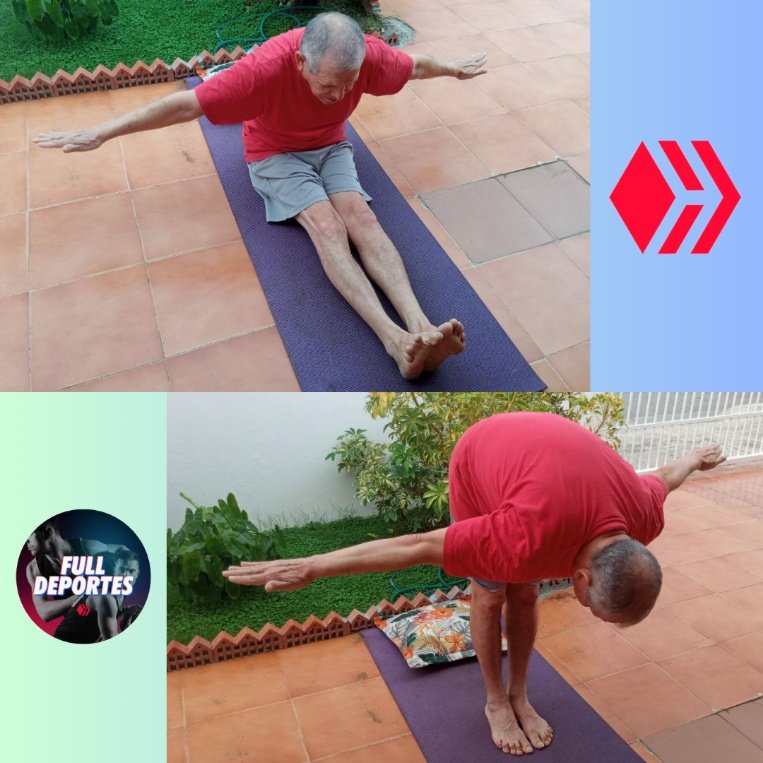
Las nombradas asanas y sus variantes son muy buenas para el estiramiento corporal, tendentes a fortalecer los músculos, así como también son adecuadas para el mejoramiento de la postura, igualmente fortalecen los músulos de la espalda y del abdomen, minimizan el cansancio, energizan el cuerpo, generan una efectiva flexibilidad muscular, conceden un buen equilibrio, mejoran los procesos digestivos, al generar el masajeo de los órganos abdominales, son relajantes, ayudan a la concentración, contribuyen en el alivio de los dolores de cabeza y la fatiga, alivian la ansiedad y calman la mente. Practicar en forma consecuente, las asanas señaladas, obtenemos los beneficios indicados, por ello se recomienda su desarrollo.
The aforementioned asanas and their variants are very good for body stretching, tending to strengthen the muscles, as well as being suitable for improving posture, they also strengthen the muscles of the back and abdomen, minimize fatigue, and energize the body. , generate effective muscle flexibility, provide good balance, improve digestive processes, by generating massage of the abdominal organs, are relaxing, help concentration, contribute to the relief of headaches and fatigue, relieve anxiety and calm the mind. By consistently practicing the indicated asanas, we obtain the indicated benefits, which is why its development is recommended.
Es muy importante el proceso de la meditación, antes de comenzar los ejercicios para calentar el cuerpo, con la finalidad de relajarnos, lograr llenarnos de paz, calmar la mente, evitar tensiones musculares e iniciar a mantenernos en forma en ese orden de ideas, lo alcanzaremos escenificando las siguiente posturas; ubicando el cuerpo arrodillados con la espalda recta, las piernas estiradas hacia atrás, los brazos extendidos al frente, con los codos doblados, inicialmente enfrentamos las palmas de las manos y luego las mantenemos juntas, con el cuello estirado, ubicando el rostro al cielo, para reflexionar e interanalizar el siguiente escrito: "Pocos entenderán el buen camino que escogistes, no te preocupes no es el camino de ellos, es el tuyo. Es solo para ti, para quien tu camino debe tener sentido, sigue adelante con rectitud". Éxitos.
Meditation Process The process of meditation is very important, before beginning the exercises to warm up the body, in order to relax, achieve peace, calm the mind, avoid muscle tension and begin to stay in shape in that order of ideas, which We will achieve it by staging the following postures; placing the body kneeling with the back straight, the legs stretched back, the arms extended in front, with the elbows bent, initially we face the palms of the hands and then we keep them together, with the neck stretched, placing the face towards the sky, to reflect and internalize the following writing: "Few will understand the good path you chose, don't worry, it is not their path, it is yours. It is only for you, for whom your path should make sense, continue forward with righteousness." Successes.
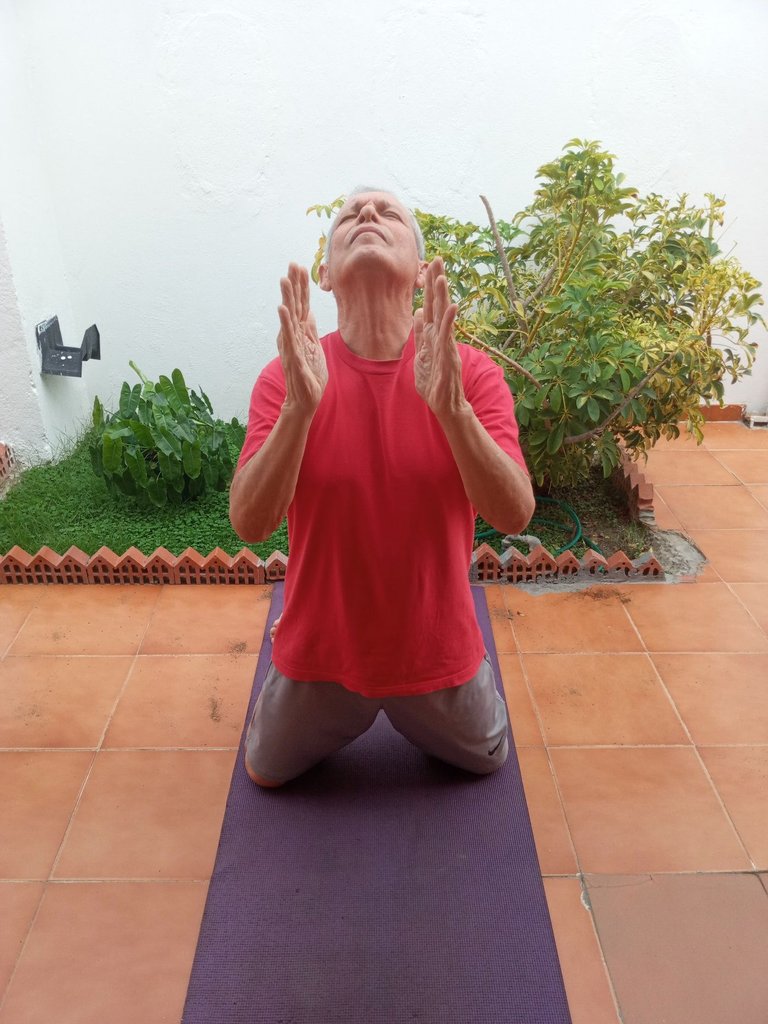
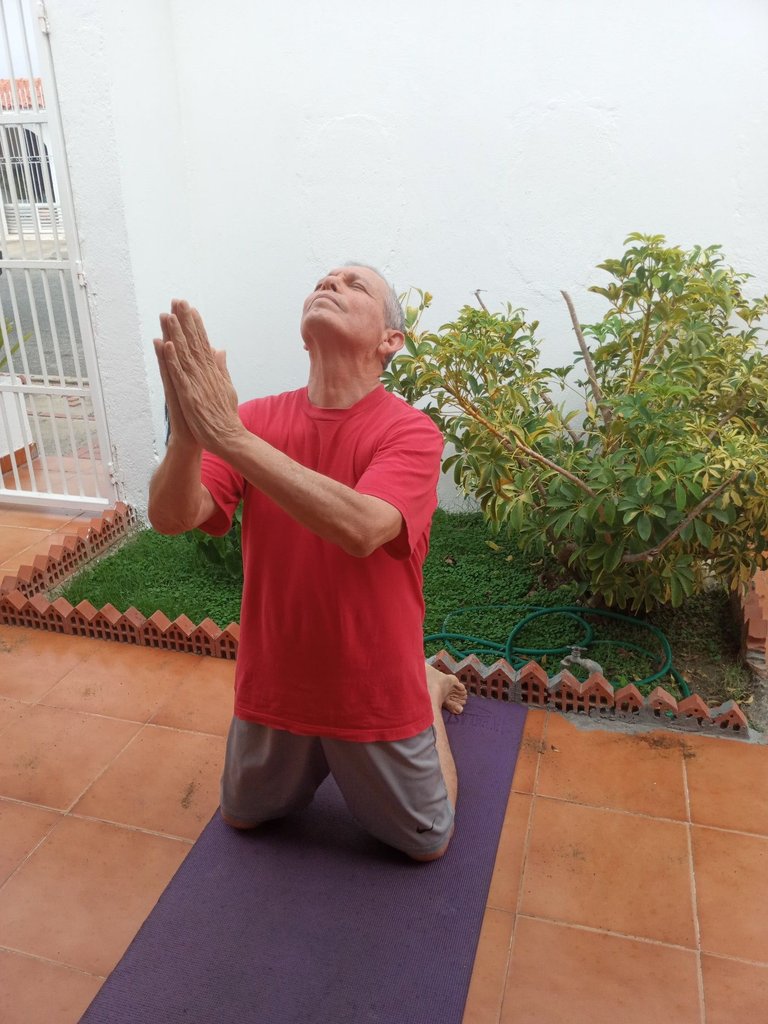
Con la finalidad de lograr un buen rendimiento, evitar lesiones, flexibilizar los músculos y articulaciones, calentaremos el cuerpo, con una serie de acciones, que contribuirán a equilibrarnos y comenzar a fortalecer los músculos de la espalda y el abdomen, asímismo las extremidades superiores e inferiores, los ejercicios son:
Acostados boca arriba, apoyando la cabeza en un cojín, ubicamos los brazos estirados hacia adelante, flexionamos las piernas colocando las plantas de los pies en la estera. A continuación, levantamos las piernas, procediendo a cruzar la pierna derecha, colocando el pie en el muslo de la otra pierna, es decir la izquierda, la cual se encuentra levantada, estirándola hacia adelante, seguidamente despegamos la cabeza y la espalda de la estera, logrando tomar con las manos la pierna izquierda cercano al tobillo, que se encuentra extendida. Retornamos a la posición inicial y seguimos hasta cumplir con el citado ejercicio en varias ocasiones, durante 8 minutos, descansando 10 segundos por cada dos minutos de ellos. Éxitos.
Proposal of exercises to warm up the body
In order to achieve good performance, avoid injuries, make muscles and joints more flexible, we will warm up the body with a series of actions that will help balance us and begin to strengthen the muscles of the back and abdomen, as well as the upper extremities and lower, the exercises are:
Lying face up, resting our head on a cushion, we place our arms stretched forward, we flex our legs, placing the soles of our feet on the mat. Next, we raise our legs, proceeding to cross the right leg, placing the foot on the thigh of the other leg, that is, the left one, which is raised, stretching it forward, then we take off the head and back from the mat , managing to take his left leg near the ankle, which is extended, with his hands. We return to the initial position and continue until we complete the aforementioned exercise several times, for 8 minutes, resting 10 seconds for every two minutes of them. Successes.
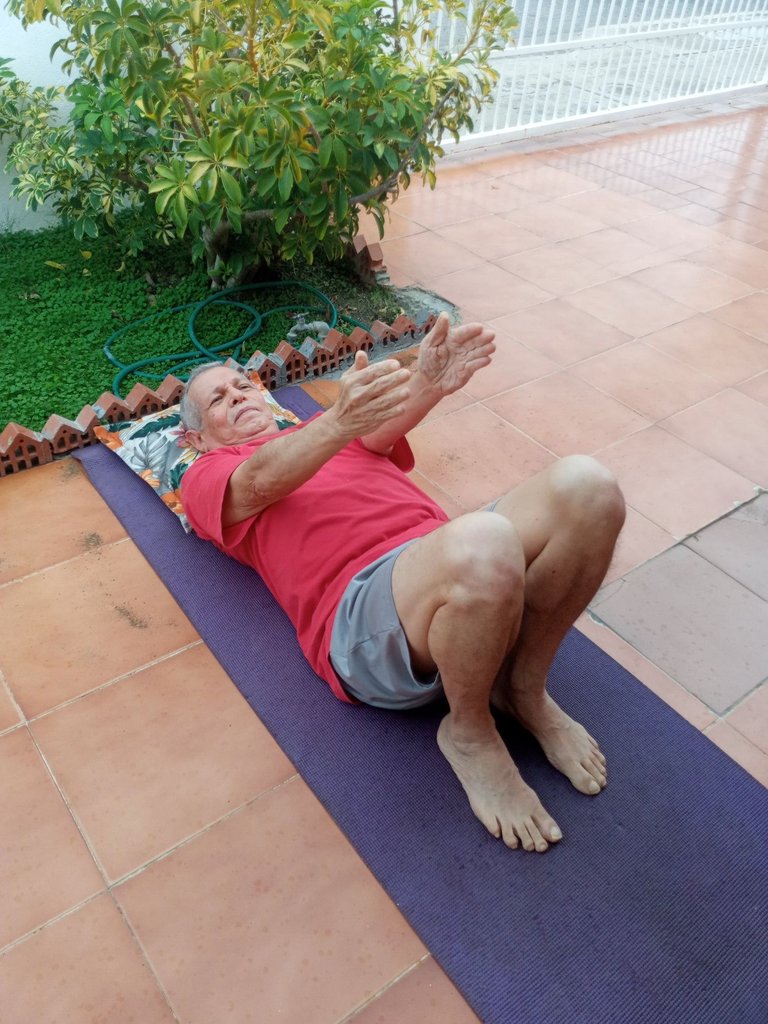
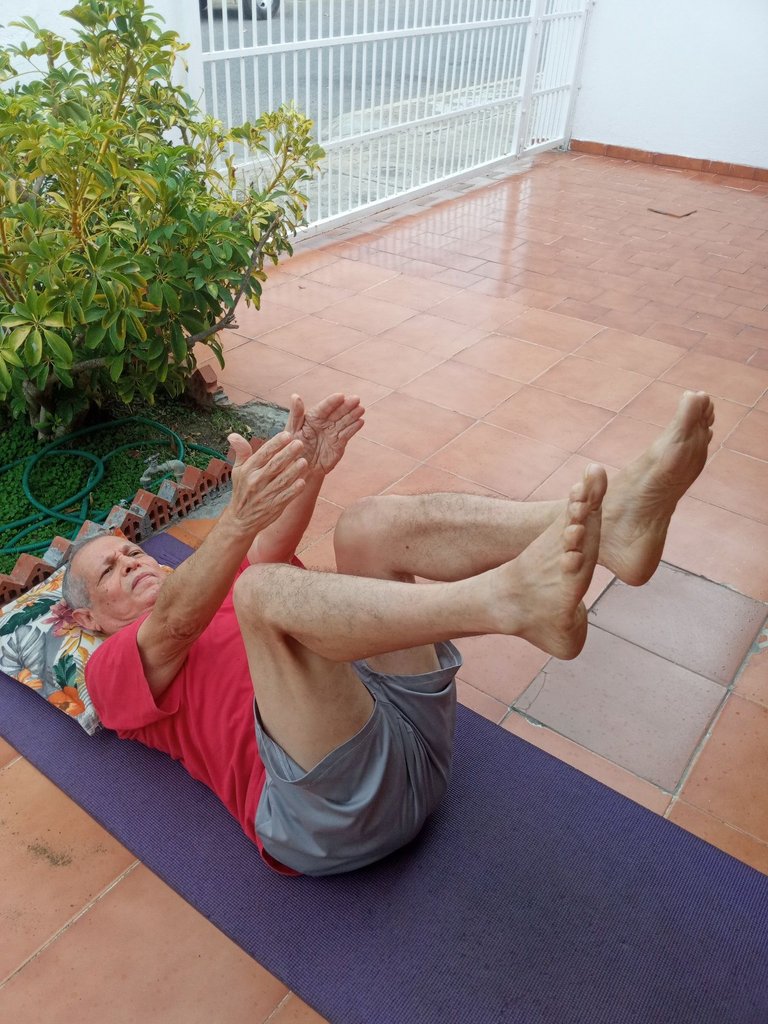
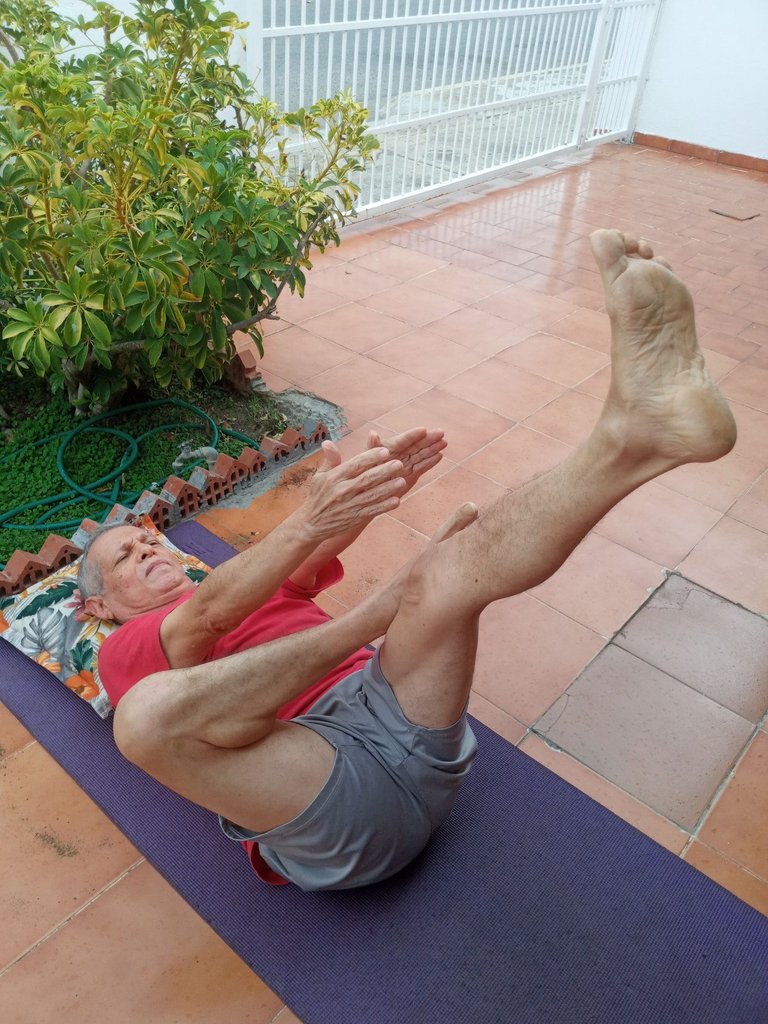
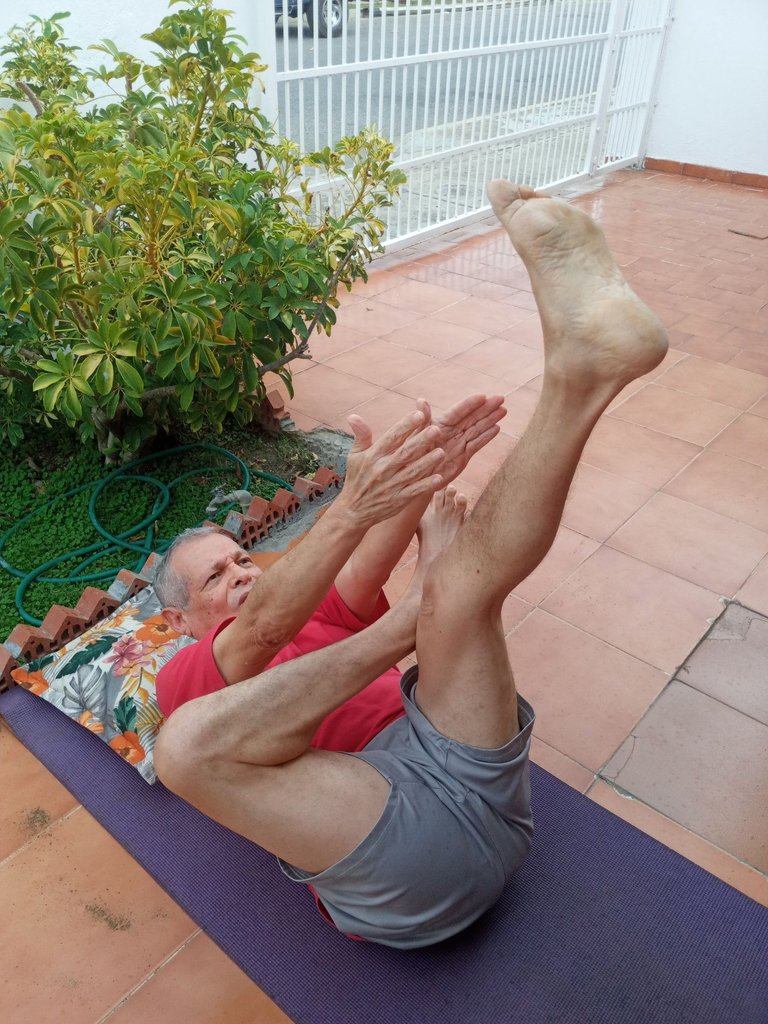
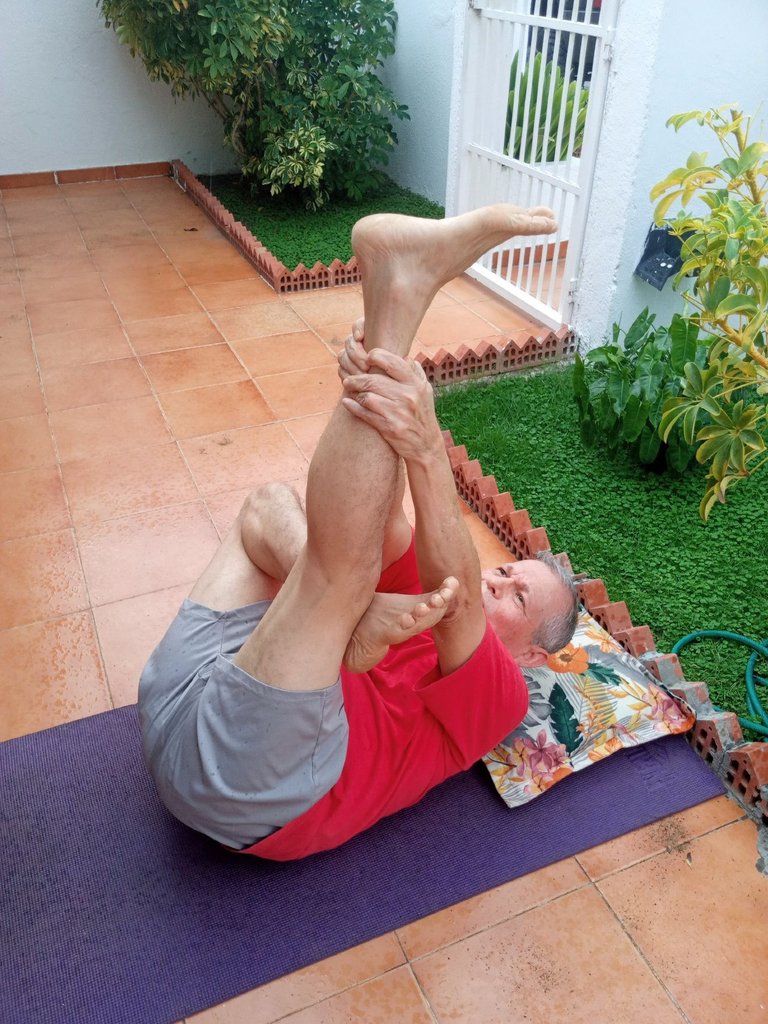
Luego de las acciones anteriores, seguimos acostados boca arriba, apoyando la cabeza en un cojín, ubicamos los brazos estirados hacia adelante, flexionamos las piernas colocando las plantas de los pies en la estera. A continuación, levantamos las piernas, procediendo a cruzar la pierna izquierda, colocando el pie en el muslo de la otra pierna, es decir la derecha, la cual se encuentra levantada, estirándola hacia adelante, seguidamente despegamos la cabeza y la espalda de la estera, logrando tomar con las manos la pierna derecha cercano al tobillo, que se encuentra extendida. Retornamos a la posición inicial y seguimos hasta cumplir con el citado ejercicio en varias ocasiones, durante 8 minutos, descansando 10 segundos por cada dos minutos de ellos. Éxitos.
After the previous actions, we continue lying on our back, resting our head on a cushion, we place our arms stretched forward, we flex our legs, placing the soles of our feet on the mat. Next, we raise our legs, proceeding to cross the left leg, placing the foot on the thigh of the other leg, that is, the right one, which is raised, stretching it forward, then we take off the head and back from the mat , managing to take the right leg near the ankle, which is extended, with his hands. We return to the initial position and continue until we complete the aforementioned exercise several times, for 8 minutes, resting 10 seconds for every two minutes of them. Successes.
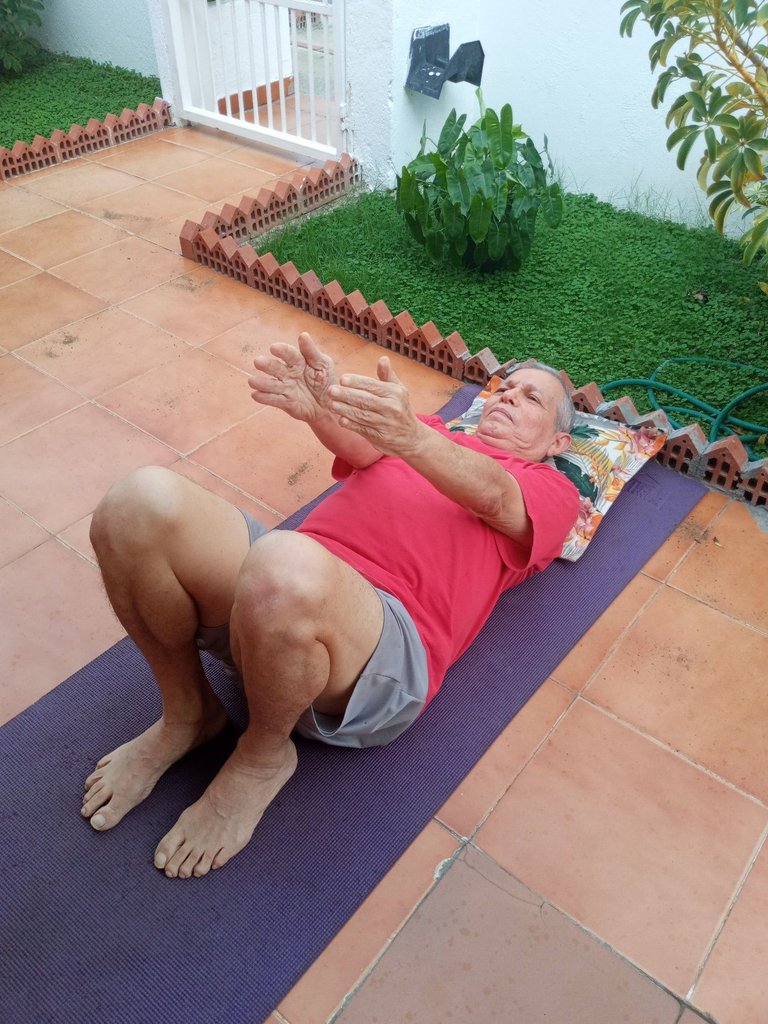
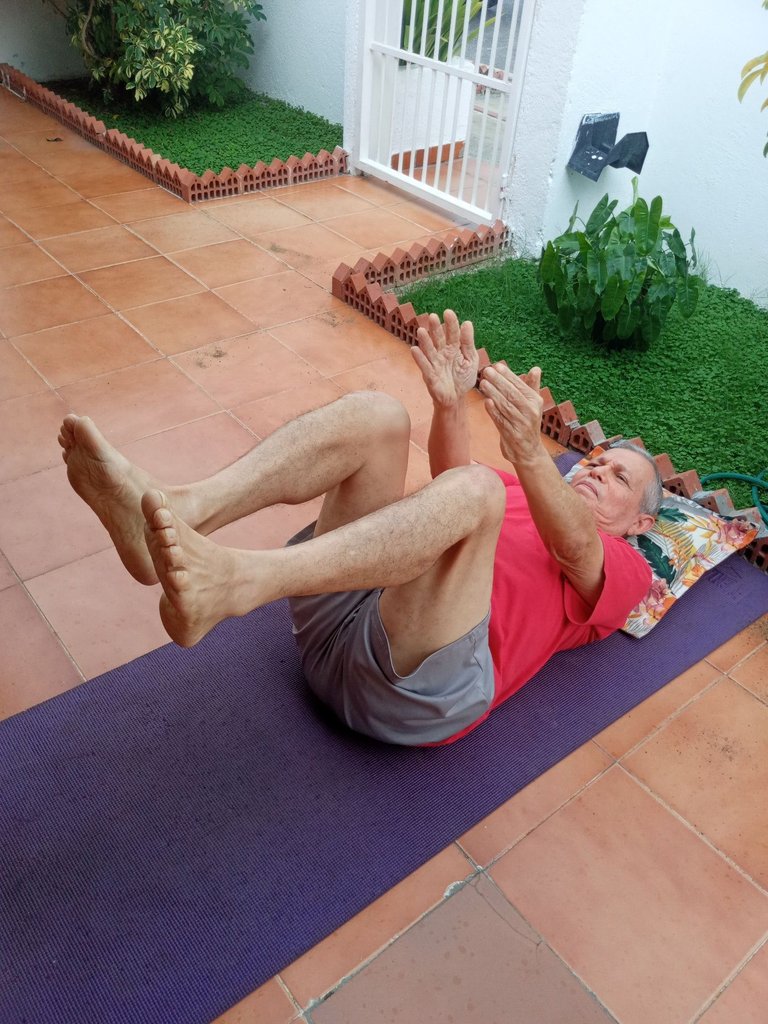
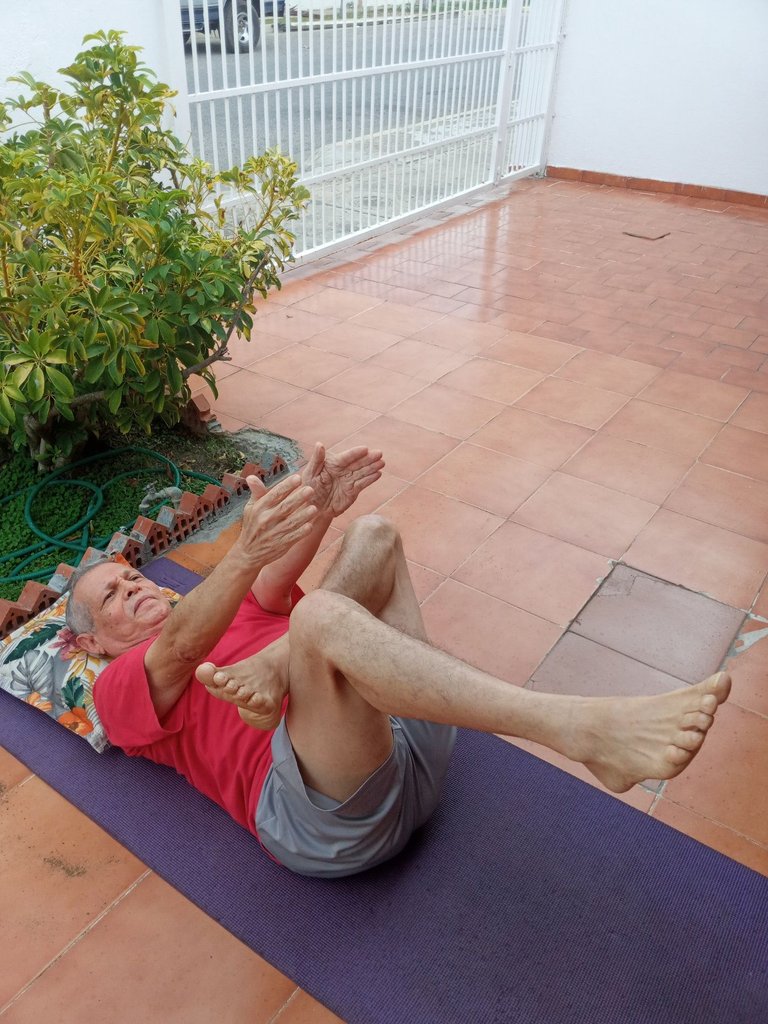

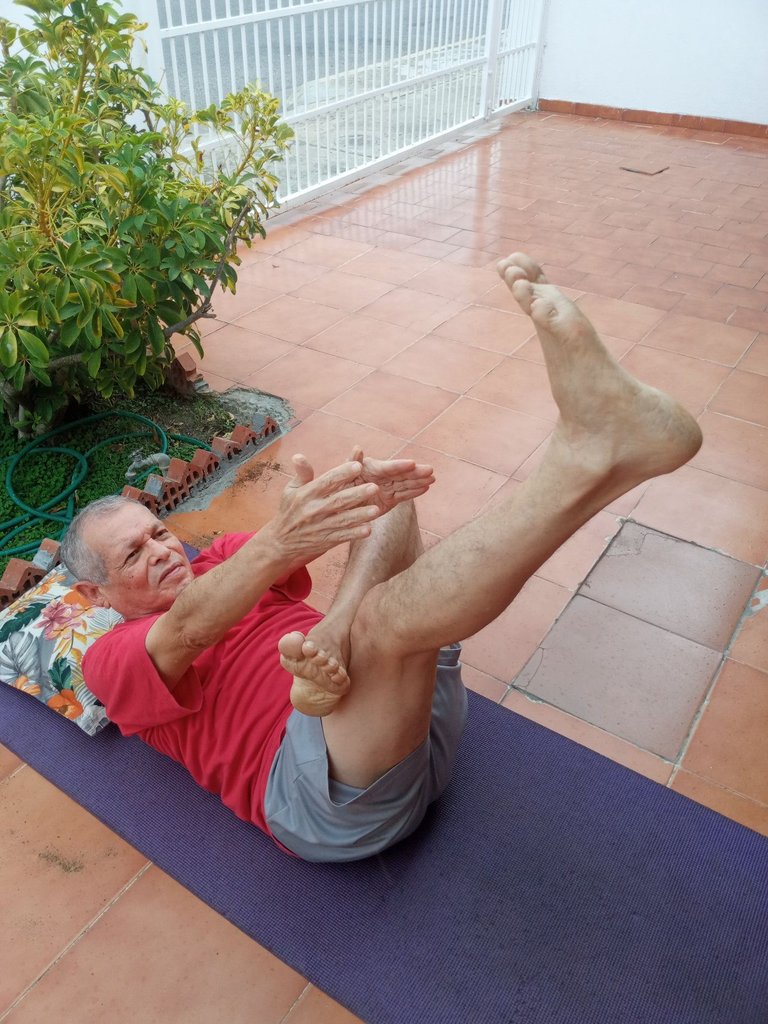
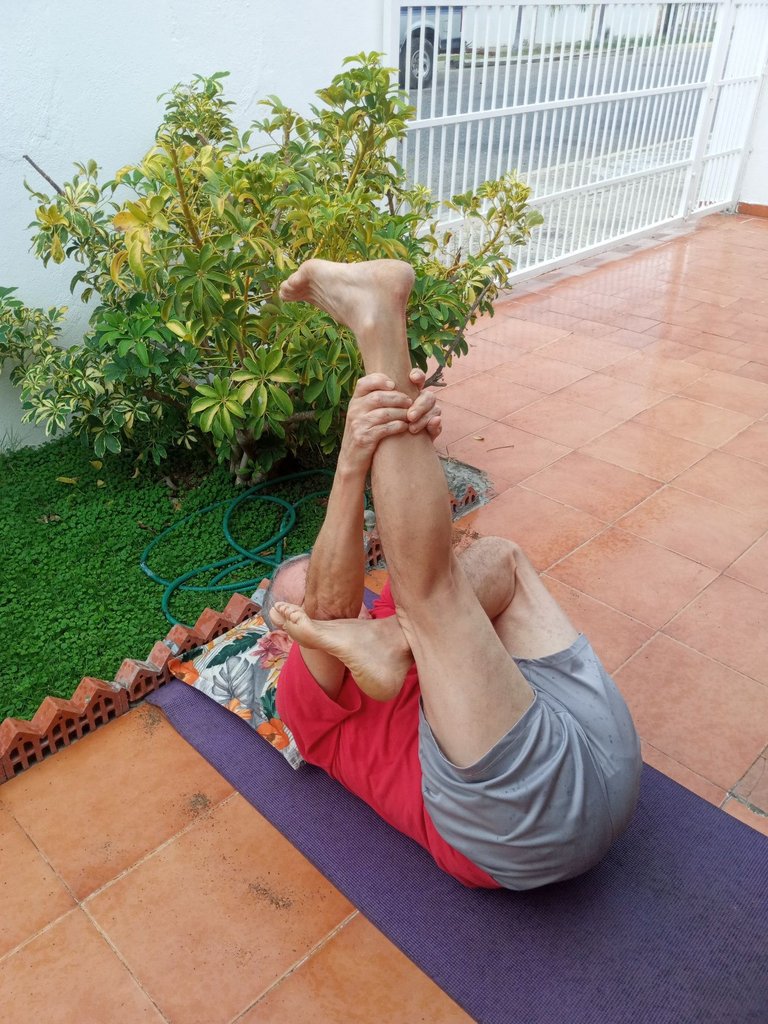
Desarrollo de la pinza estando sentados o Paschimottanasana y su variante, las realizaremos manteniendo el cuerpo en Dandasana o del bastón, con los glúteos en la esterilla, el torso recto, los brazos a los lados inicialmente, flexionamos las piernas y luego las estiramos hacia adelante, con las manos apuntando a los pies, luego ubicamos lateralmente los brazos o extendidos en cruz
Estando sentados en Dandasana o la postura del bastón; con la espalda derecha, los brazos estirados a los lados, las manos en la estera muy cercanas a los glúteos, la mirada al frente y las piernas extendidas al frente, procedemos a doblar las rodillas un poco, con la intensión de estirar los brazos al frente, para tocar con las manos los pies, manteniéndonos equilibrados y en resistencia corporal, inspirando, aguantando y expulsando aire. Éxitos.
Development of the grip while seated or Paschimottanasana and its variant, we will perform them keeping the body in Dandasana or the cane, with the buttocks on the mat, the torso straight, the arms at the sides initially, we flex the legs and then stretch them forward, with the hands pointing to the feet, then we place the arms laterally or extended in a cross
While sitting in Dandasana or the staff pose; With your back straight, your arms stretched out to your sides, your hands on the mat very close to your buttocks, your gaze straight ahead and your legs extended in front of you, we proceed to bend our knees a little, with the intention of stretching our arms out. forehead, to touch the feet with the hands, keeping ourselves balanced and in body resistance, inhaling, holding and expelling air. Successes.
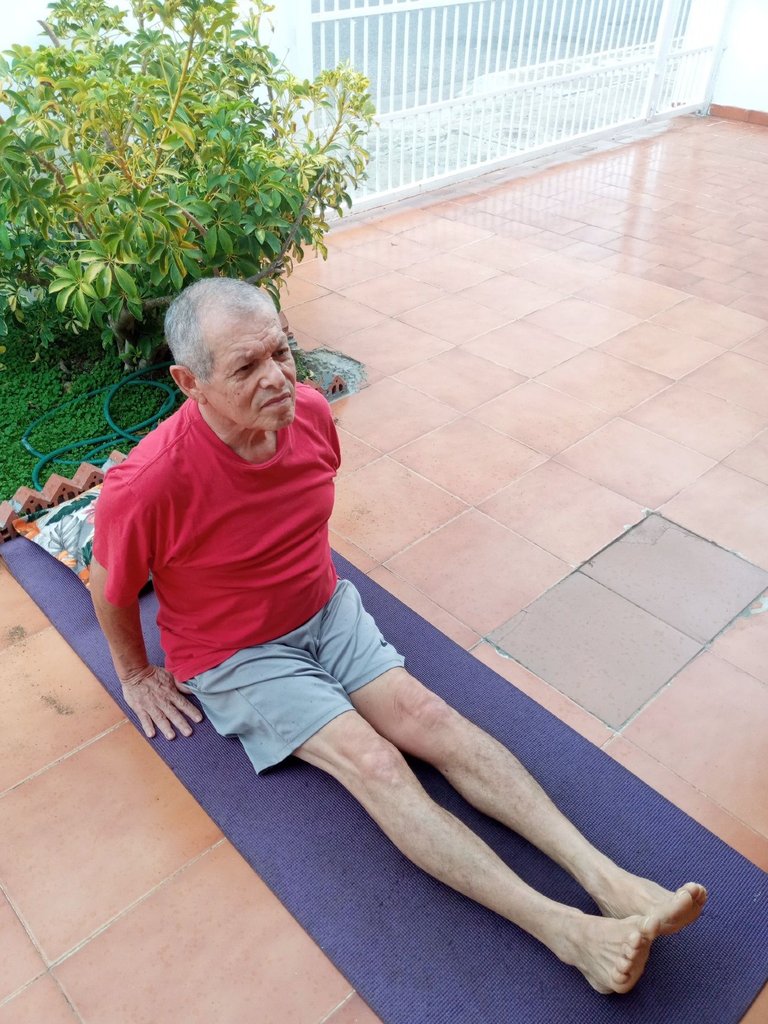

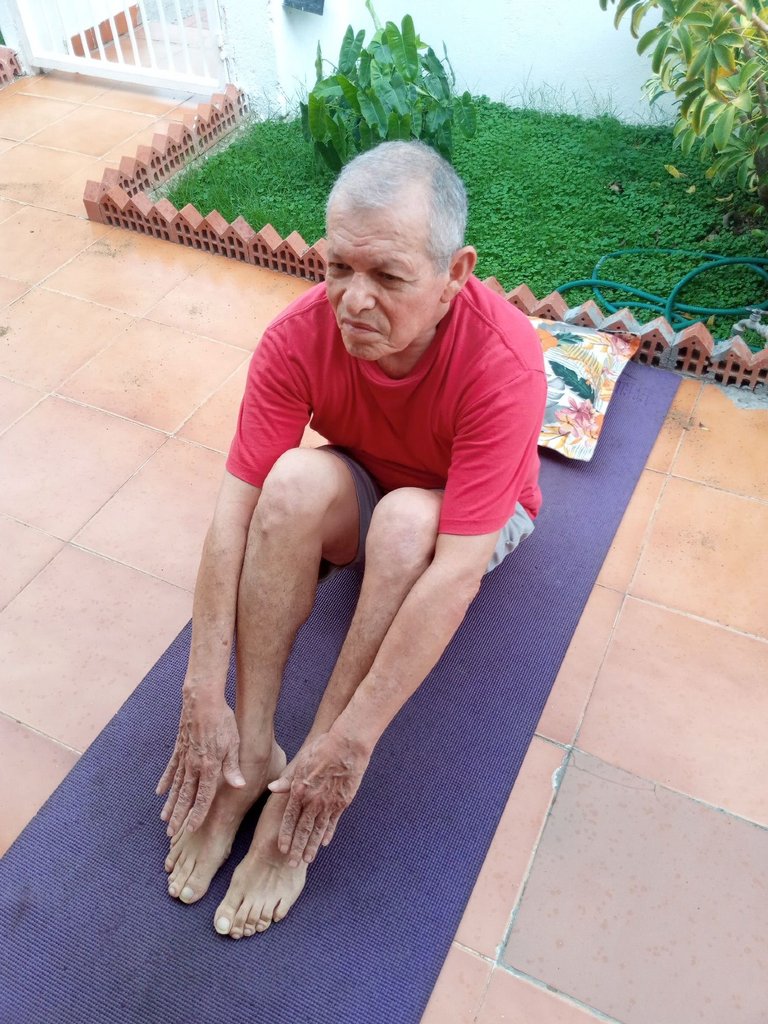
Ubicados en la posición anterior, suavemente vamos estirando las piernas, igualmente los brazos, con la finalidad de tocar los pies, conformando la asana la pinza o Pachismottanasana, durando 30 segundos en la asana, manteniéndonos equilibrados y en resistencia corporal inspirando, aguantando y expulsando aire. Desde la asana anterior, con el torso hacia adelante, hasta donde lo permita nuestra flexibilidad, logramos estirar los brazos lateralmente, hasta colocar las manos nuevamente en el piso Éxitos.
Located in the previous position, we gently stretch the legs, as well as the arms, in order to touch the feet, forming the asana the clamp or Pachismottanasana, lasting 30 seconds in the asana, staying balanced and in body resistance by inhaling, holding and expelling air. From the previous asana, with the torso forward, as far as our flexibility allows, we manage to stretch our arms laterally, until we place our hands again on the floor Successes.
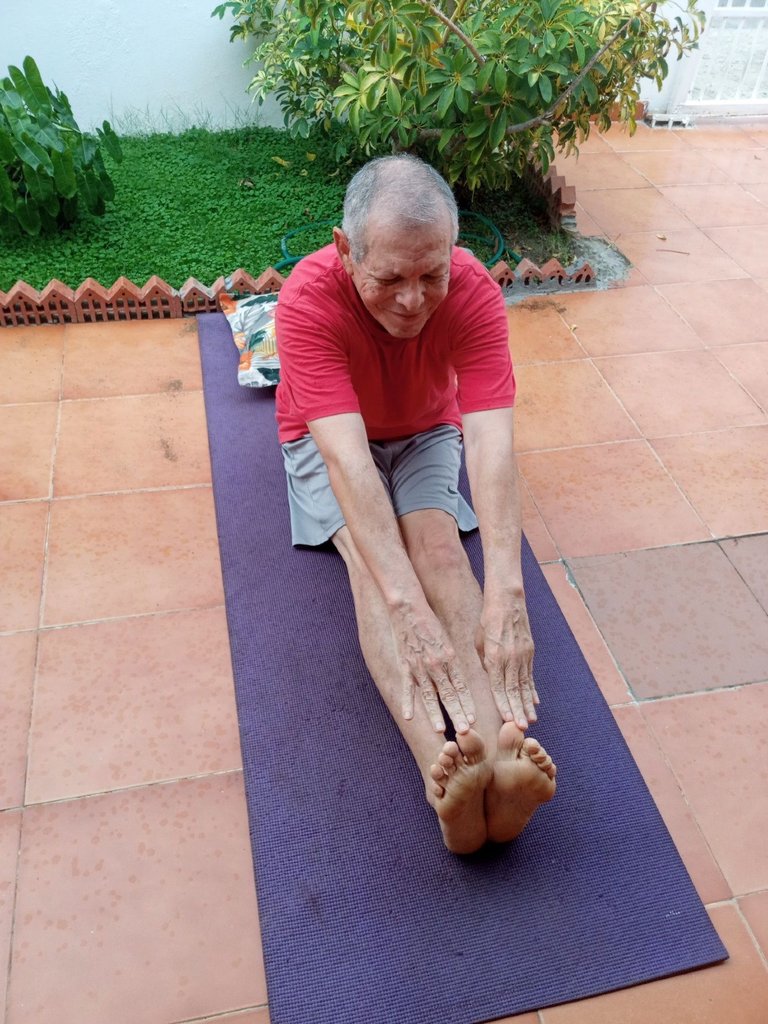
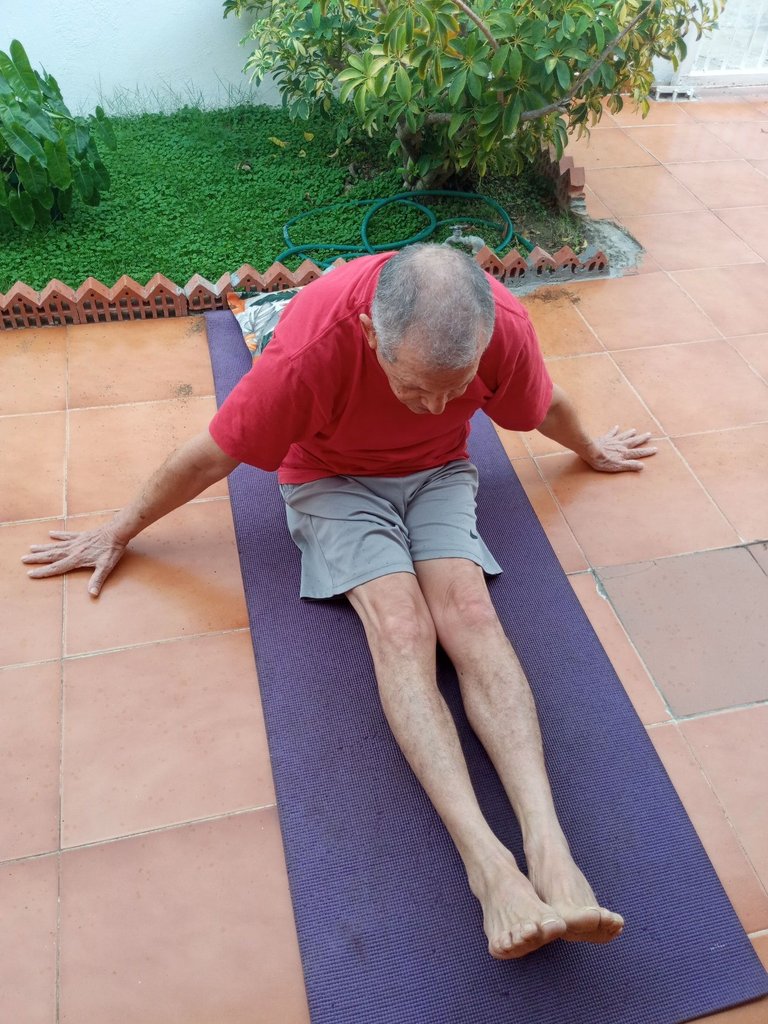
Conformamos las variante de la pinza o Pachismottanasana, estando en la ubicación anterior, logramos despegar las manos del piso y levantar los brazos bien estirados, ubicándolos en cruz, para conformar dicha variante, durando en la asana 30 segundos, equilibrados y en resistencia corporal, inspirando, aguantando y expulsando aire. Éxitos.
We form the variation of the clamp or Pachismottanasana, being in the previous location, we manage to take our hands off the floor and raise our arms well stretched, placing them in a cross, to form said variation, lasting 30 seconds in the asana, balanced and in body resistance, inhaling, holding and expelling air. Successes.
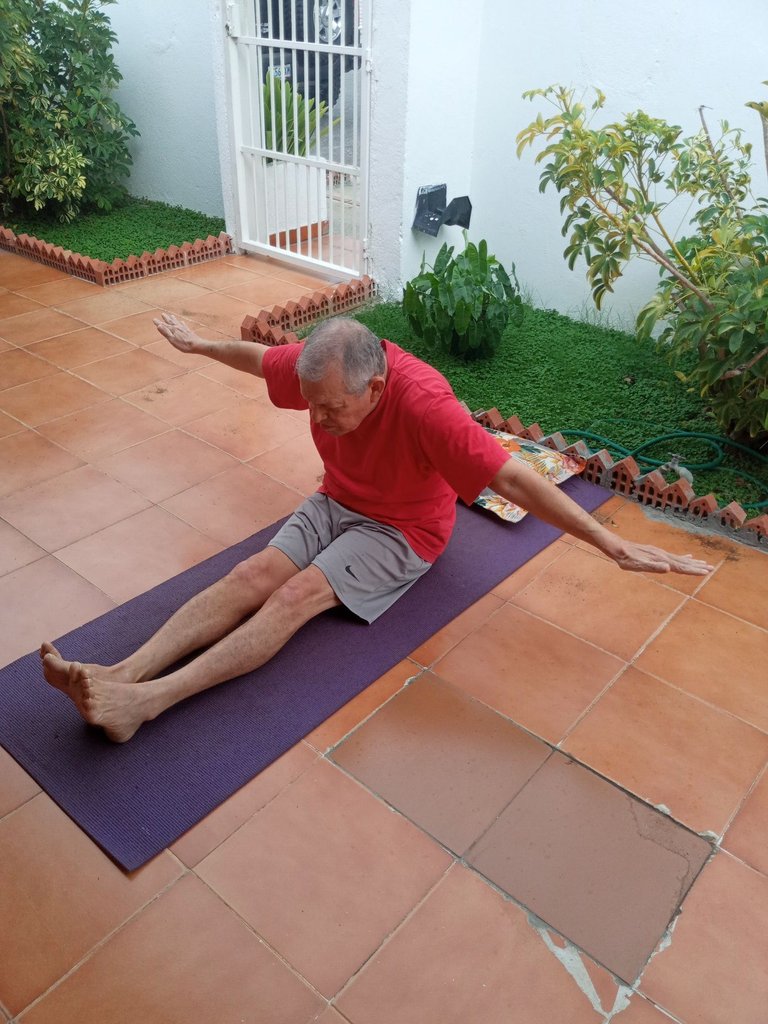
Desarrollo de la pinza o Uttanasana y su variante, en esta ocasión estando parados en Tadasana o la postura de la montaña; flexionamos el torso direccionándolo hacia adelante, conjuntamente con los brazos estirados, logrando que las manos toquen los pies, ubicando finalmente los brazos en cruz
Estando parados en Tadasana o la postura de la montaña; con la espalda derecha, los brazos estirados hacia arriba, juntando las palmas de las manos, la mirada al frente y las piernas extendidas, doblamos las rodillas un poco, con la intensión de estirar los brazos con la finalidad de tocar con las manos los pies, mientras doblamos un poco las rodillas, manteniéndonos equilibrados inspirando, aguantando y expulsando aire. Éxitos.
Development of the clamp or Uttanasana and its variant, this time standing in Tadasana or the mountain posture; We flex the torso, directing it forward, together with the arms stretched, ensuring that the hands touch the feet, finally placing the arms in a cross
While standing in Tadasana or Mountain Pose; With our back straight, our arms stretched upward, putting our palms together, looking straight ahead and our legs extended, we bend our knees a little, with the intention of stretching our arms in order to touch our feet with our hands. , while we bend our knees a little, staying balanced by inhaling, holding and expelling air. Successes.
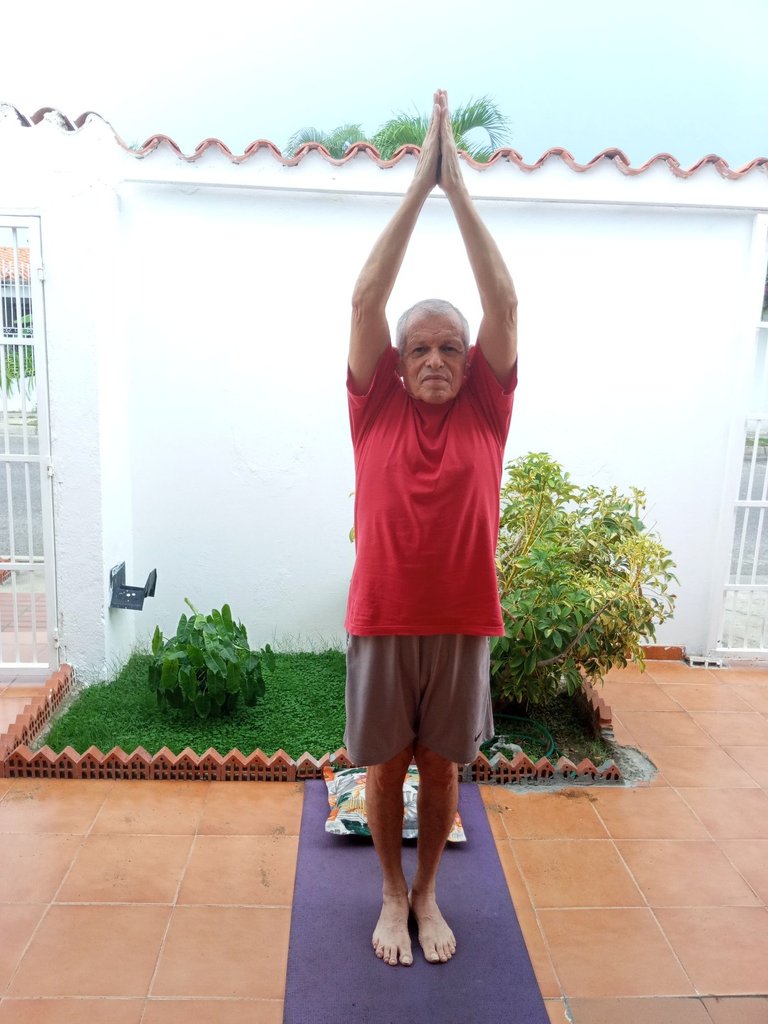

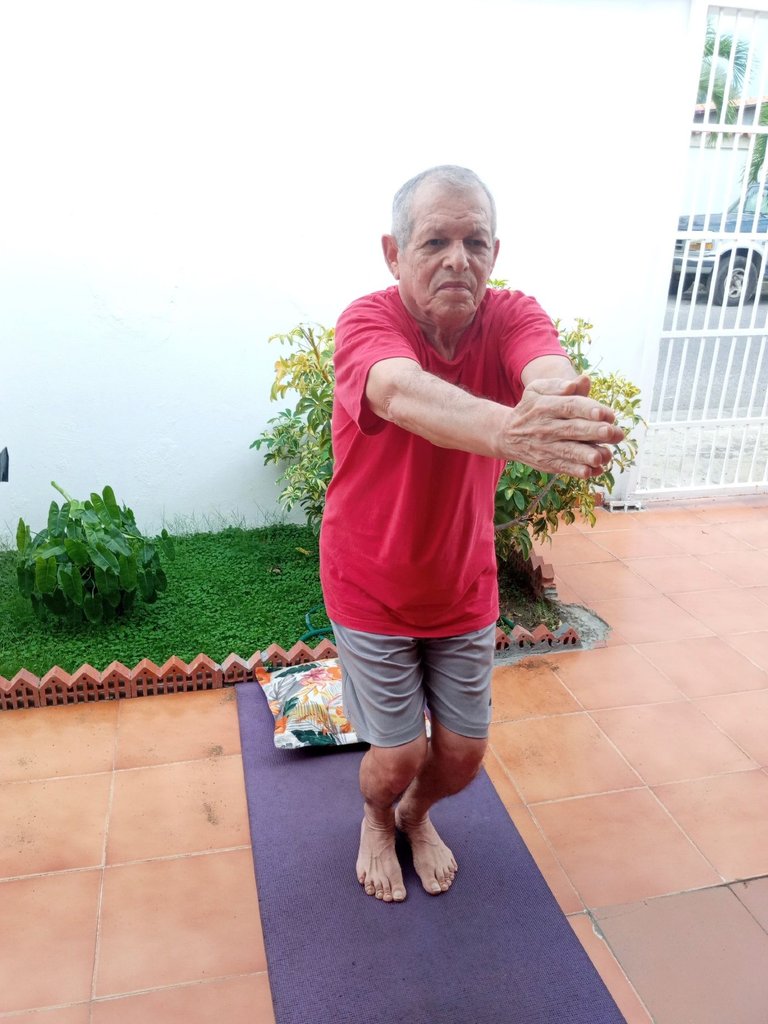
Seguimos parados con las espalda derecha, ahora estiramos las piernas, cuyas rodillas estaban dobladas, flexionamos el torso para direccionar los brazos hacia abajo conformando la asana Uttanasana o la pinza parados, al apuntar con los dedos de las manos hacia los pies, durando en la postura 30 segundos, manteniéndonos equilibrados y en resistencia corporal, inspirando, aguantando y expulsando aire. Seguidamente, llevamos las manos a los lados del cuerpo, cuyos brazos están estirados. Éxitos.
We continue standing with our backs straight, now we stretch our legs, whose knees were bent, we flex the torso to direct the arms downward, forming the standing asana Uttanasana or the clamp, by pointing the fingers of the hands towards the feet, lasting in the posture for 30 seconds, staying balanced and in body resistance, inhaling, holding and expelling air. Next, we bring our hands to the sides of the body, whose arms are stretched. Successes.
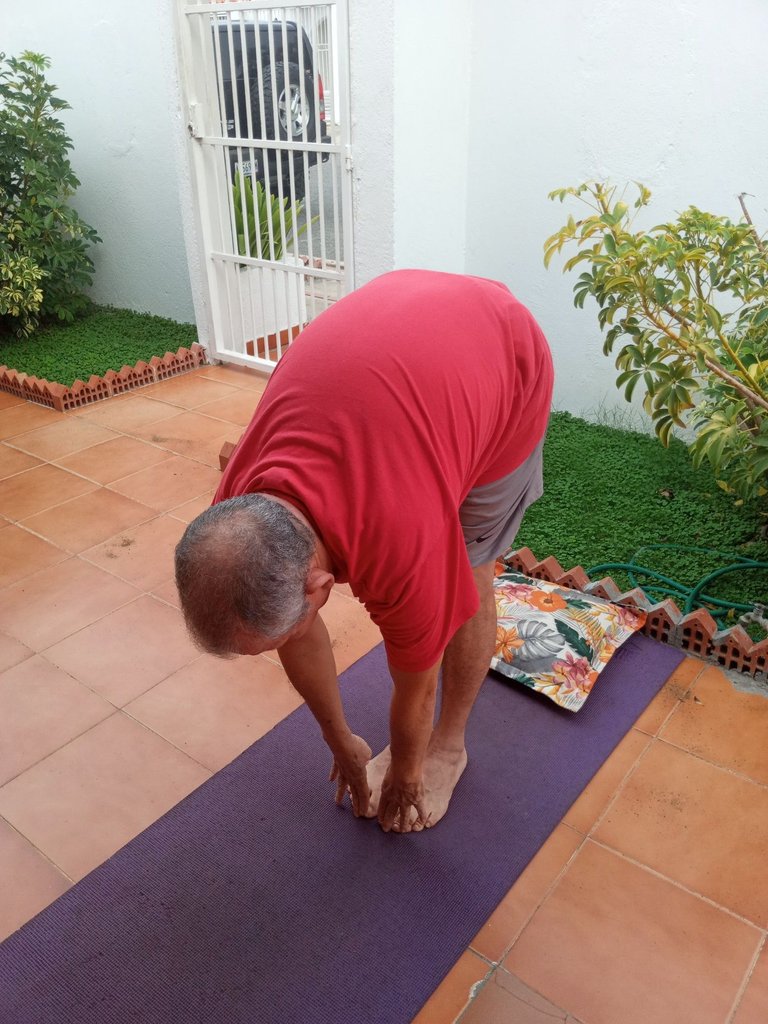
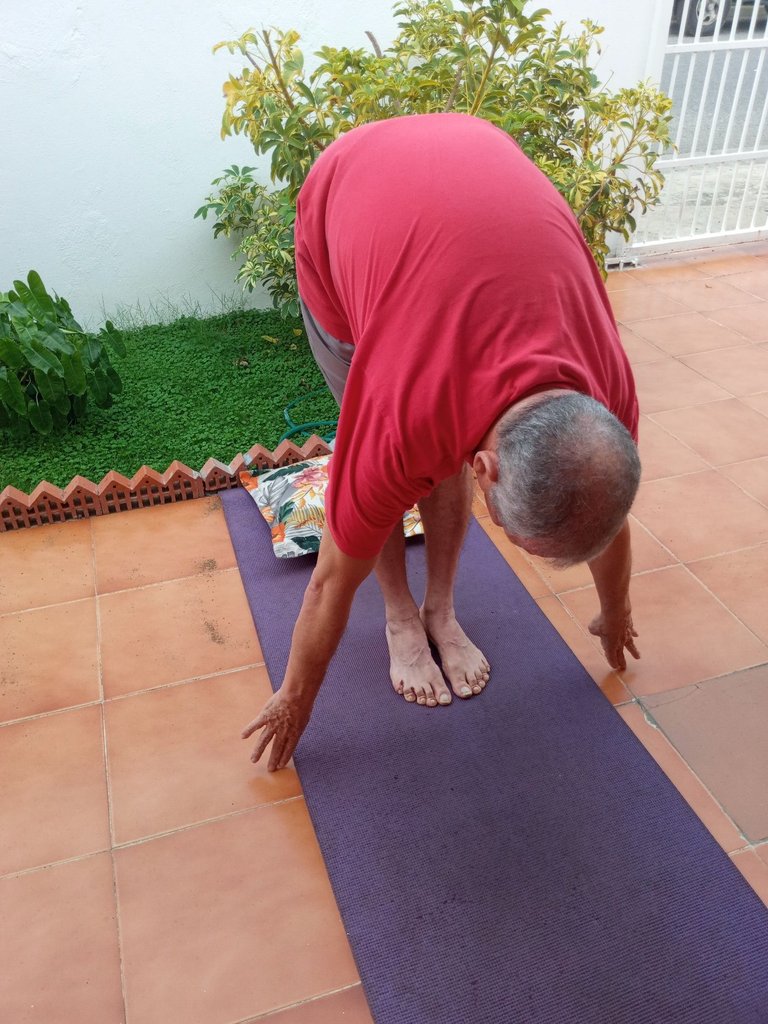
Conformamos la variante de Uttanasana o de la pinza parados, de la siguiente manera; ubicados en la posición anterior, nos quedamos en ella, estirando los brazos lateralmente para llevarlos en cruz, durando en la variante 30 segundos, equilibrados y en resistencia corporal, inspirando, aguantando y expulsando aire. Éxitos.
We form the variation of Uttanasana or the standing clamp, as follows: Located in the previous position, we remain in it, stretching our arms laterally to carry them in a cross, lasting in the variant 30 seconds, balanced and in body resistance, inhaling, holding and expelling air. Successes.
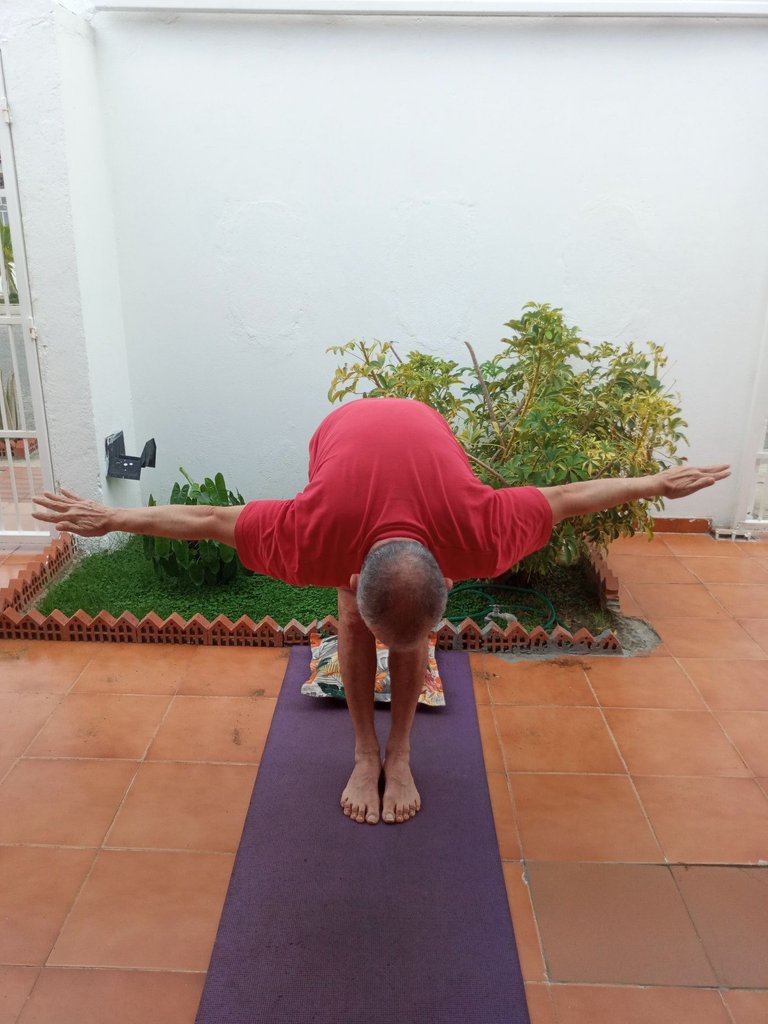
Beneficios de las posturas; la pinza estando sentados o Paschimottanasana y su variante, con las piernas estiradas, los brazos extendidos hacia los pies, asímismo de Uttanasana y su variante, estando parados, con el torso flexionado y los brazos estirados, logrando que las manos toquen los pies. En ambas asanas para sus variantes, ubicamos los brazos en cruz
- Las nombradas asanas y sus variantes son muy buenas para el estiramiento corporal y el fortalecimiento muscular, así como también para el mejoramiento de la postura.
- Son asanas efectivas para fortalecer los músulos de la espalda y del abdomen.
- Las practicadas posturas, minimizan el cansancio, energizan el cuerpo, generan una efectiva flexibilidad muscular y conceden un buen equilibrio.
- Son asanas que mejoran los procesos digestivos, al generar el masajeo de los órganos abdominales.
- Desarrollar las asanas descritas, relajan el organismo, ayudan a la concentración y contribuyen en el alivio de los dolores de cabeza y la fatiga.
- Son posturas que alivian la ansiedad y calman la mente.
Benefits of postures; the clamp while seated or Paschimottanasana and its variant, with the legs stretched, the arms extended towards the feet, also from Uttanasana and its variant, while standing, with the torso flexed and the arms stretched, ensuring that the hands touch the feet. In both asanas for their variants, we place the arms in a cross
- The aforementioned asanas and their variants are very good for body stretching and muscle strengthening, as well as for improving posture.
- They are effective asanas to strengthen the muscles of the back and abdomen.
- The practiced postures minimize fatigue, energize the body, generate effective muscle flexibility and provide good balance.
- They are asanas that improve the digestive processes, by generating the massage of the abdominal organs.
- Developing the asanas described relaxes the body, helps concentration and contributes to the relief of headaches and fatigue.
- They are postures that relieve anxiety and calm the mind.
las posturas; la pinza desde estar sentados en Dandasana para lograr Paschimottanasana y su variante, con las piernas estiradas, los brazos extendidos hacia los pies, asímismo la asana Uttanasana y su variante, desde estar parados o en Tadasana, con el torso flexionado y los brazos estirados, logrando que las manos toquen los pies y en ambas asanas para sus variantes, ubicamos los brazos en cruz; son muy recomendadas por sus beneficios para el organismo al permitir el estiramiento corporal y el fortalecimiento muscular, así como también para el mejoramiento de la postura, igualmente por ser efectivas para fortalecer los músulos de la espalda y del abdomen. Al practicar las asanas señaladas se minimiza el cansancio, llenan de energiza el cuerpo, igualmente generan una efectiva flexibilidad muscular y conceden un buen equilibrio. Se ha comprobado, que estas asanas, mejoran los procesos digestivos, al generar el masajeo de los órganos abdominales, Desarrollar las asanas descritas, relajan el organismo, ayudan a la concentración, contribuyen en el alivio de los dolores de cabeza y la fatiga, de igual manera, son posturas que alivian la ansiedad y calman la mente. Amigos, al agradecerles su receptividad y contínuas visitas, se suscribe a ustedes, con mucho afecto. Omar Gustavo Rojas Ortiz desde la ciudad de Cumaná en el estado Sucre-Venezuela.
the postures; the clamp from sitting in Dandasana to achieve Paschimottanasana and its variant, with the legs stretched, the arms extended towards the feet, likewise the asana Uttanasana and its variant, from standing or in Tadasana, with the torso flexed and the arms stretched, ensuring that the hands touch the feet and in both asanas for their variants, we place the arms in a cross; They are highly recommended for their benefits for the body by allowing body stretching and muscle strengthening, as well as for improving posture, and also for being effective in strengthening the muscles of the back and abdomen. By practicing the indicated asanas, fatigue is minimized, they energize the body, they also generate effective muscle flexibility and provide good balance. It has been proven that these asanas improve digestive processes by massaging the abdominal organs. Developing the asanas described relaxes the body, helps concentration, contributes to the relief of headaches and fatigue, Likewise, they are postures that relieve anxiety and calm the mind. Friends, in thanking you for your receptivity and continued visits, I subscribe to you with great affection. Omar Gustavo Rojas Ortiz from the city of Cumaná in the state of Sucre-Venezuela.
Las imágenes fueron tomadas por Nancy de Rojas con mi celular Samsung Galaxy A10s y la publicación es de mi autoría.
The images were taken by Nancy de Rojas with my Samsung Galaxy A10s cell phone and the publication is my own.
Portada editada en Canva
Cover edited in Canva
Logos propiedad de @hiveio, @fulldeportes
Logos owned by @hiveio, @fulldeportes
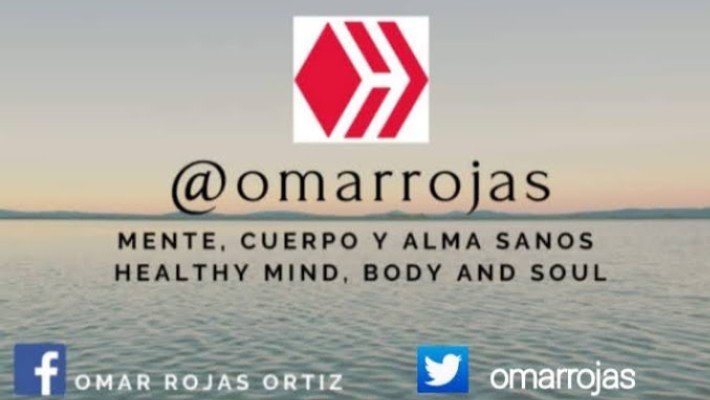
https://inleo.io/threads/omarrojas/re-leothreads-lxtxehn6
The rewards earned on this comment will go directly to the people ( omarrojas ) sharing the post on LeoThreads,LikeTu,dBuzz.
Excelente el estiramiento, tan importante para el trabajo integral de nuestro cuerpo. No es solamente Cardio o Fuerza, estos estiramientos favorecen mucho a la disminuciòn del riesgo de lesion en deportistas! Buen trabajo compañero!
Gracias estimado @her18lux cada mañana el estiramiento corporal es fundamental, siempre lo hago, para que mi curpo tenga los músculos con su flexibilifad frecuente.
Como siempre usted nos regala muy buen contenido. Me gustó mucho la incoporación del tema de la meditación, Saludos y mi admiración por su trabajo.
https://x.com/nothoriuss/status/1719902193678160044?s=20
Gracias estimado @pacobeta365 sus palabras son muy estimulantes. Es muy cierto, la motivación es un proceso esencial, antes de entrenar el cuerpo.
Si esto es necesario para fortalecer los músculos se ve muy práctica la rutina...
Gracias estimada @leidys01 Le recomiendo las acciones de estiramiento presentadas, energizan y nos mantiene en forma con músculos fuertes.
Qué genio amigo querido!! Me encantó tu práctica! Siempre brindando cada detalle con tanto amor! El estiramiento con las asanas elegidas es maravilloso! Tomaré algunas de las que compartiste para mi práctica de mañana :D
Un fuerte abrazo y gracias por inspirar!!
Mi linda profesora @belug es un grato placer, saber que le agrada lo que oriento sobre yoga, me siento muy contento con tus palabras relacionadas a mis prácticas. Te deseo muchos éxitos.
Muy buenos, realizaré algunos para mi posturo jeje. Saludos!
Gracias estimado @yeral-diaz esa es la idea, leernos y aplicar nuestras ideas. Usted también desarrolla acciones físicas bien importantes para la salud.